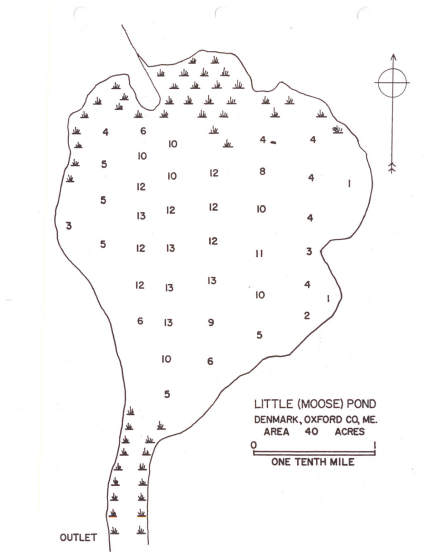Motorboats with more than 6 hp. are prohibited on Little Pond.


Little Pond in Denmark is sometimes called “Little Moose Pond.” Little Pond is a shallow pond with a lot of aquatic vegetation, which provides cover for both adult fish and forage fish. Little Pond has been sampled once a year in August, since 1997.
Largemouth bass are very abundant and fish up to four pounds are not uncommon. Smallmouth bass also are present, along with minnows, golden shiners, white perch, white suckers, yellow perch, hornpout (bullhead), chain pickerel and pumpkinseed sunfish.
26 percent of soils in the watershed are type A soils. Type A soils tend to be well drained sands, loams, and gravels. When vegetation is removed and the soil is exposed they can be susceptible to erosion. Because they are often coarse with ample pore space, there is low runoff potential and water will not usually pool on them. These soils can be good places to site leach fields or infiltrate stormwater from a home or residence.
19 percent of soils in the watershed are type B soils. B soils have moderate infiltration rates and fine to moderate texture and soil size. They are usually made up silts and loams. Although not as well drained as A soils, they can also be good places to site leach fields and infiltrate stormwater.
21 percent of soils in the watershed are type C soils. C soils have low infiltration rates and typically have a layer that impedes the movement of water. These soils are made of sands, clays, and loams and are one of the most common soil types in western Maine.
3 percent of soils in the watershed are type D soils. D soils have a high runoff potential and very low infiltration rates. Soils with a high water table, clay or other impervious layer near the surface are typically D soils. These soils are often associated with wetlands.
26 percent of soils in the watershed are type C/D soils. C/D soils are a mix of these two soil types. They have fairly high runoff potential and low infiltration rates and often pool water.
The remaining 5 percent of the watershed is taken up by the pond.